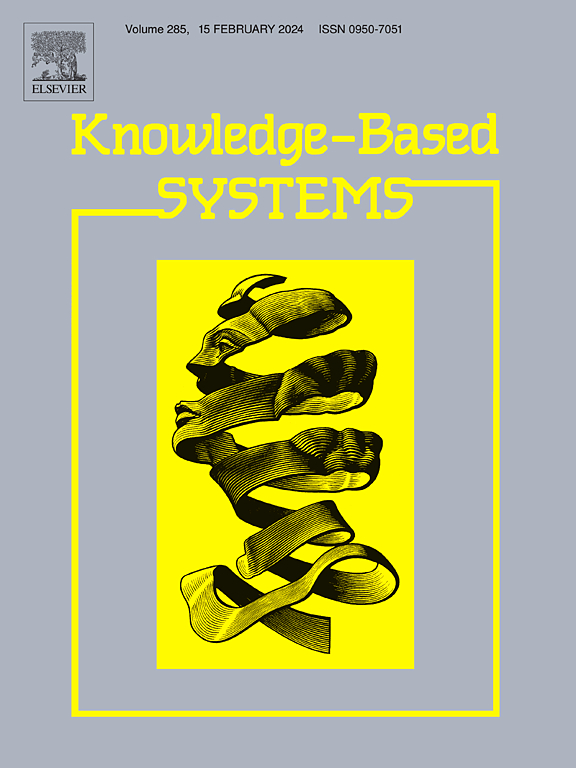A novel interpretable semi-supervised graph learning model for intelligent fault diagnosis of hydraulic pumps
IF 7.2
1区 计算机科学
Q1 COMPUTER SCIENCE, ARTIFICIAL INTELLIGENCE
引用次数: 0
Abstract
Although deep learning has gained popularity in the field of fault diagnosis, its limitations are also equally apparent, including: (1) heavy reliance on a substantial volume of labeled samples; (2) a lack of interpretability. To confront these issues, this article proposes a novel interpretable semi-supervised graph learning model for intelligent fault diagnosis of hydraulic pumps. A comparison between the raw data and the model's hidden layer representations is conducted to minimize feature loss. The model commences by preliminarily learning fault information that is intermixed with noise, leveraging a substantial corpus of unlabeled data. In response to the intricacy of downstream tasks, an interpretable feature reconstruction module is introduced. This module employs a nonlinear surrogate model to fit and elucidate the learned features, embedding the explanation scores into the features to reconstruct the samples, a process utilized for model fine-tuning. The feature reconstruction module capitalizes on the explanatory power of the surrogate model, guiding the model to concentrate more on features with significant impact. This method not only provides interpretability during model training but also expedites the convergence speed of the model. Finally, two hydraulic pump experiment cases are used to verify the effectiveness of the model, and the results show that our method has obvious advantages in reducing label dependence and increasing model reliability for decision making.
用于液压泵智能故障诊断的新型可解释半监督图学习模型
虽然深度学习在故障诊断领域大受欢迎,但其局限性也同样明显,包括:(1) 严重依赖大量标注样本;(2) 缺乏可解释性。面对这些问题,本文提出了一种新型的可解释半监督图学习模型,用于液压泵的智能故障诊断。该模型对原始数据和模型的隐藏层表示进行比较,以尽量减少特征损失。该模型首先利用大量未标记的数据,初步学习混杂着噪声的故障信息。针对下游任务的复杂性,引入了一个可解释的特征重建模块。该模块采用非线性代用模型来拟合和阐释所学特征,将解释分数嵌入特征中以重建样本,这一过程用于模型微调。特征重构模块利用了代用模型的解释能力,引导模型更加专注于具有重大影响的特征。这种方法不仅在模型训练过程中提供了可解释性,还加快了模型的收敛速度。最后,利用两个液压泵实验案例验证了模型的有效性,结果表明我们的方法在减少标签依赖性和提高模型决策可靠性方面具有明显优势。
本文章由计算机程序翻译,如有差异,请以英文原文为准。
求助全文
约1分钟内获得全文
求助全文
来源期刊

Knowledge-Based Systems
工程技术-计算机:人工智能
CiteScore
14.80
自引率
12.50%
发文量
1245
审稿时长
7.8 months
期刊介绍:
Knowledge-Based Systems, an international and interdisciplinary journal in artificial intelligence, publishes original, innovative, and creative research results in the field. It focuses on knowledge-based and other artificial intelligence techniques-based systems. The journal aims to support human prediction and decision-making through data science and computation techniques, provide a balanced coverage of theory and practical study, and encourage the development and implementation of knowledge-based intelligence models, methods, systems, and software tools. Applications in business, government, education, engineering, and healthcare are emphasized.
 求助内容:
求助内容: 应助结果提醒方式:
应助结果提醒方式:


